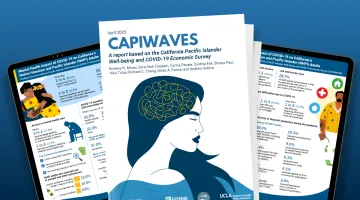Summary
The Report on the Status of Women and Girls in California™ has been a valuable resource for advocates, business leaders, elected officials and engaged citizens since 2011. This year’s report offers a deeper dive into the representation of women and girls in the arts — a vital industry that shapes cultural narratives and societal perceptions. Throughout history, the arts have been a powerful medium for expressing ideas, influencing social change, and reflecting the diversity of human experiences. However, women and girls have often been marginalized, underrepresented, or misrepresented in many artistic forms, from literature and visual arts to film and music. This lack of representation not only limits the visibility of women’s perspectives but also perpetuates stereotypes and reinforces gender inequalities.
As we continue to strive for a more inclusive and equitable society, ensuring the representation of women and girls in the arts is paramount. While more women are in leadership positions in cultural institutions in California and across the country now than ever before, it will take time to see true change.
The report offers updates on data shared over the past decade about how women and girls are faring in key areas in California, as well as some of the persistent challenges still facing them, including the earnings gap, health and emotional well-being, and safety issues.
Key takeaways
- Women are well represented in decision-making roles in the art world, but the works of women artists are often missing from public view. About half (48%) of U.S. museums are directed by women, and women hold majority roles as curators, conservationists, librarians and education specialists. But only 14% of displayed works are by women artists.
- Women make up about 46% of artists in the United States, but their works comprise only 14% of those displayed in prominent museums. Young and emerging women artists are entering a field dominated by mostly men and are more likely to remain unknown until their work is shown.
- The overall earnings gap is closing: In the year 2000, the median earnings of California women were 78% that of men, and in 2023 that figure had grown to 87%. Women and men entering the employed labor force earn close to the same amount, but the gap grows significantly with the birth of the first child.
- In 2023, about 8% of California women reported themselves victims of sexual harassment or assault; an estimated 6% had been sexually abused by an intimate partner. The cost for these victims is great: They are four times more likely to consider suicide than nonvictims, and they are twice as likely to report depression.
- Women are more likely to be diagnosed with depression (21% in women to 13% in men) and to suffer psychological distress (16% in women and 12% in men). 56% of women and 47% of men say that worries about finances have a negative impact on their emotional well-being.
- Over half (52%) of California girls in 12th grade report chronic feelings of sadness and hopelessness, a feeling that begins in earnest in middle school with 41% of girls expressing these feelings by the seventh grade.







